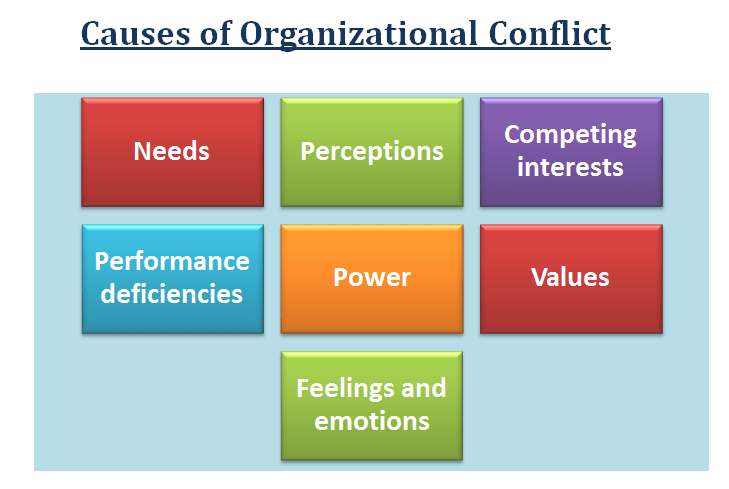Conflicts in organizations can arise from a variety of causes, and the complexity of these causes often mirrors the complexity of the company system itself. While the sources of conflict are diverse, they can generally be traced back to four main types, each of which plays a significant role in how conflicts manifest within the workplace. Understanding these causes can help organizations better manage and resolve conflicts as they arise.
1. Tension Between Goals and Means
One of the most common causes of conflict is the mismatch between available resources and the goals or needs of different organizational subunits or employees. When resources (time, money, personnel) are limited, there are often competing demands for their use. This can lead to distribution conflicts and disputes over resource allocation.
-
Example: Departmental conflicts may arise when multiple teams or units need a share of a limited budget but have conflicting priorities. One department might feel that its needs are more pressing, leading to tension with others who seek the same resources.
2. Multipersonality and Complexity of the Organization
The organizational structure of a company, with its division of labor and necessary hierarchies, can also create conflict. The interdependencies among individuals, teams, and departments can lead to role conflicts, power struggles, and disputes over authority. Additionally, the dynamics between the formal (official) and informal organizational structures often contribute to misunderstandings or competition for influence.
-
Example: A conflict might arise between two departments with overlapping responsibilities but unclear boundaries regarding their roles. Alternatively, conflicts can occur between managers and employees, where there’s a divergence between formal authority and informal influence within the organization.
3. Environmental Ties of the Company
External factors also contribute to conflicts within a company. A company’s relationships with its external environment—such as competitors, customers, suppliers, or regulatory bodies—can trigger internal conflicts. External pressures like market competition, regulatory changes, or public scrutiny can exacerbate internal issues and create tensions among organizational members.
-
Example: A company facing fierce competition may experience internal conflicts as departments race to adopt new strategies or technologies to remain competitive. Alternatively, changes in government regulations could prompt conflicts between legal, financial, and operations teams about compliance.
4. Incomplete Information
A lack of clear, accurate, or complete information is another major cause of conflict. In the absence of perfect information, individuals and teams may draw different conclusions, leading to misunderstandings and disagreements. Even when the parties involved share the same goals, differing interpretations of information can create conflict situations.
-
Example: A team may misinterpret a set of market data due to incomplete information, leading to poor decision-making. This could result in conflict when the outcome of those decisions affects other departments that were not included in the initial analysis.
Managing Conflict in the Workplace
While conflicts cannot always be avoided, their negative impact can be mitigated through effective conflict management. Recognizing the underlying causes of conflict is the first step in addressing them. Once the causes are understood, steps can be taken to reduce misunderstandings, clarify roles, provide accurate information, and align goals. In some cases, external mediation or adjustments to the organizational structure may be necessary to prevent conflicts from escalating.
It’s also important to note that some level of conflict can be healthy for an organization. It can lead to creative solutions, foster innovation, and drive improvements. The key is to manage conflicts constructively and ensure they don’t hinder the overall objectives of the company.
« Back to Glossary Index






